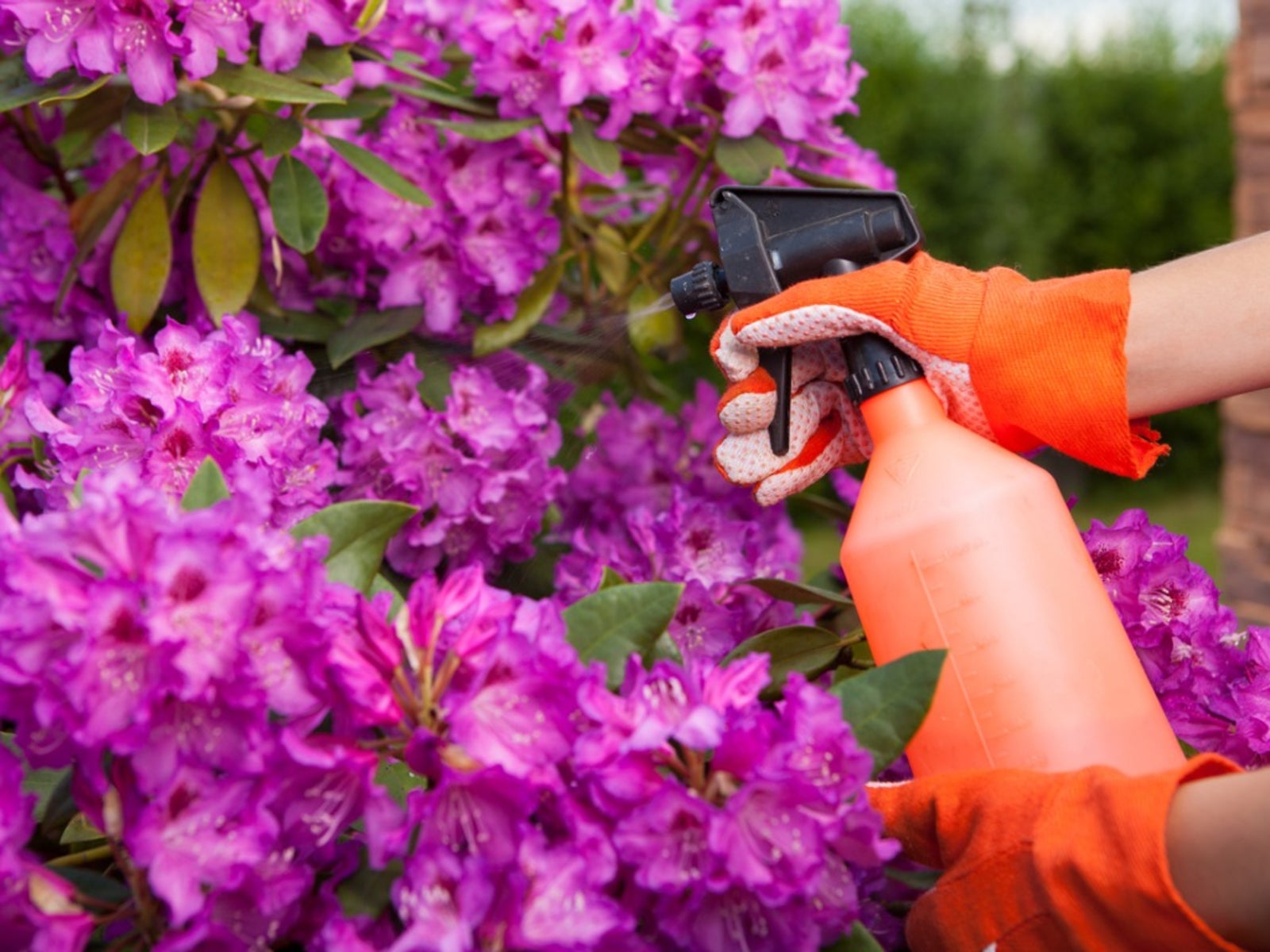Issues With Rhododendrons: Dealing With Rhododendron Insect Problems And Diseases

Rhododendron bushes are similar to azaleas and members of the genus Rhododendron. Rhododendrons bloom in late spring and provide a burst of color before summer flowers set in. They vary in height and shape, but all produce a plethora of blooms that are perfect for shady, acid-rich areas in the garden. Issues with rhododendrons are rare as they are relatively low maintenance plants. Rhododendron pests and disease harm plants that are stressed due to environmental conditions or injury. Common problems of rhododendron bushes can be avoided by providing the best growing environment possible and maintaining a consistent pruning, mulching, and fertilizing program. Plant your rhododendron in a shady area that drains well has a pH of 4.5 to 6.0 and provide fertilizer several times during the spring and summer to encourage growth. Mulch to retain moisture and provide protection.
Rhododendron Insect Problems
Of the few rhododendron insect problems that exist, most can be handled first through prevention or subsequent treatment with neem oil. Here are some common pests affecting this shrub:
- Spider mites - Spider mites feed off of bud and leaf sap, leaving leaves yellow or bronzed.
- Lace bugs - If the upper sides of leaves are speckled green and yellow, then lace bugs may be at work. The tiny lace bug does most of its damage in the spring and summer and tends to be most problematic on rhododendrons that have been planted in sunny locations. The young insects feed on sap and leave small drops of black excrement in their path.
- Weevils - The adult black vine weevil is a night-feeding insect that is about 1/5 to 2/5 inches (5-10 mm.) in length. It is most prevalent from May through September. The weevil feeds on leaves creating a C-shaped notch around the leaf margin. Although the damage is not attractive, it presents no serious risk to the bush.
Before treating your rhododendron for pests, be sure that you have a professional identify your problem and assist you with a treatment plan. Check with your local Cooperative Extension Office for assistance.
Diseases of Rhododendrons
Few diseases of rhododendrons are also prevalent. These include:
- Chlorosis - Chlorosis, an iron deficiency, is common in rhododendrons and causes leaves to turn from a rich dark green to a light green or even yellow. New leaves may even emerge completely yellow. Chlorosis becomes a problem when the soil pH is 7.0 or higher. Amending the soil with sulfur and providing an iron fertilizer will help correct the problem.
- Fungal dieback - Many different fungi cause a disease known as dieback. Leaves and the terminal portion of branches wilt and eventually die back. Soil that is infected, heavy rain, and splashing water will spread fungi that enter the bush through weak areas. Cut off all infected areas and destroy them. Spray copper sulfate fungicide after blooming and repeat at least two more times in two week intervals.
- Winter burn - Rhododendrons that are exposed to a very dry winter can experience winter burn. Leaves curl up to protect moisture loss and will eventually die. Protect rhododendrons from winter burn by planting in a protected area and mulching heavily. Be sure to water your plants consistently before winter.
Sign up for the Gardening Know How newsletter today and receive a free copy of our e-book "How to Grow Delicious Tomatoes".